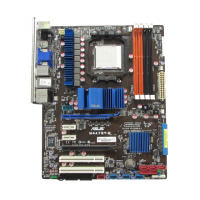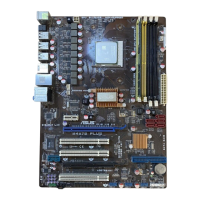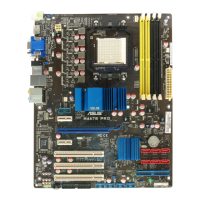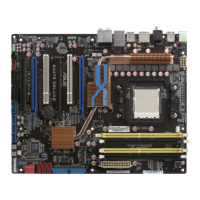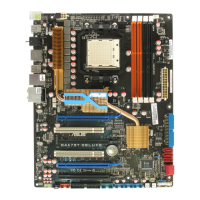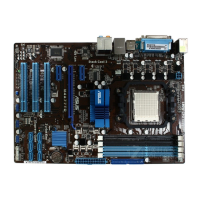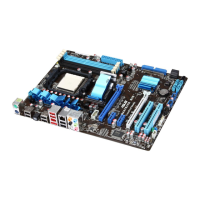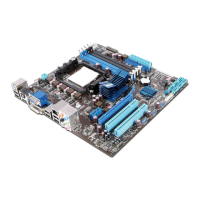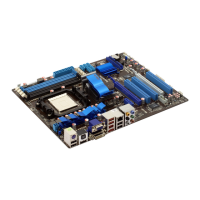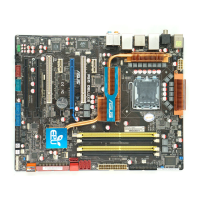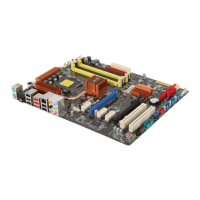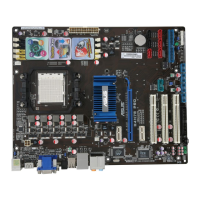
Do you have a question about the Asus M4N78 PRO - Motherboard - ATX and is the answer not in the manual?
| Form Factor | ATX |
|---|---|
| Chipset | NVIDIA GeForce 8300 |
| Compatible Processors | AMD Phenom FX / Phenom / Athlon / Sempron |
| Memory Slots | 4 x DIMM |
| Maximum Memory | 16 GB |
| Memory Type | DDR2 |
| PCI Express x16 Slots | 1 |
| PCI Slots | 2 |
| PCIe x1 Slots | 2 |
| IDE Ports | 1 x ATA133 |
| Audio Codec | Realtek ALC1200 |
| LAN Speed | 10/100/1000 Mbps |
| BIOS Type | AMI BIOS |
| Socket | AM2+/AM2 |
| CPU Socket | AM2+/AM2 |
| Supported Memory Speed | 1066/800/667 MHz |
| USB Ports | 12 (6 on back panel, 6 via headers) |
| Audio | 8-channel |
| LAN | Gigabit Ethernet |
| RAID Support | RAID 0, 1, 0+1, 5 |
| SATA Ports | 6 x SATA 3Gb/s |
Essential safety guidelines to prevent electrical hazards and damage.
Instructions for safe handling and installation of the motherboard.
Provides a summary of the manual's organization and content.
Explains symbols for DANGER/WARNING, CAUTION, IMPORTANT, and NOTE.
Lists sources for additional product and software update information.
Explains the meaning of bold text, italics, key notations, and commands.
Initial greeting and list of items included in the motherboard package.
Highlights key technological features and capabilities of the motherboard.
Lists essential safety and handling steps before installing components.
Details the physical arrangement and identification of motherboard parts.
Step-by-step guide for installing the CPU and its associated heatsink and fan.
Instructions for installing and configuring DDR2 DIMM modules.
Explains different expansion slots and the process for installing expansion cards.
Details the function and configuration of motherboard jumpers and various connectors.
Covers OS installation and the use of the motherboard support DVD.
Procedures for saving, updating, and recovering the system BIOS.
Guide on accessing and using the BIOS setup utility interface.
Overview of basic system information displayed in the BIOS Main menu.
Configuration options for CPU overclocking, frequency, and voltage settings.
Settings for configuring CPU, chipset, and other system devices.
Options for ACPI and APM configuration, including system suspend and power-on states.
Settings to manage the system's boot sequence and startup behavior.
Access to built-in utilities for BIOS updates, profiles, and system diagnostics.
Procedures for saving changes, discarding them, or loading default BIOS settings.
